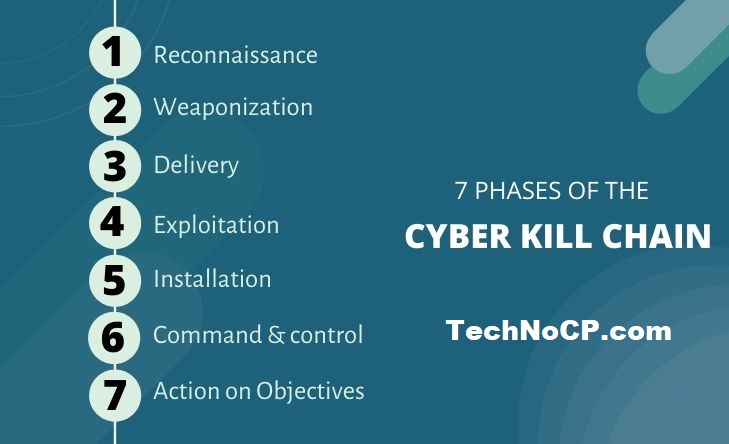The cyber kill chain is a series of steps that trace stages of a cyberattack from the early reconnaissance stages to the exfiltration of data. The kill chain helps us understand and combat ransomware, security breaches, and advanced persistent attacks (APTs).
The cyber kill chain is essentially a cybersecurity model created by Lockheed Martin that traces the stages of a cyber-attack, identifies vulnerabilities, and helps security teams to stop the attacks at every stage of the chain.
Lockheed Martin derived the kill chain framework from a military model – originally established to identify, prepare to attack, engage, and destroy the target. Since its inception, the kill chain has evolved to better anticipate and recognize insider threats, social engineering, advanced ransomware, and innovative attacks.
Cybersecurity is one of the top issues that organizations are battling every day. In fact, according to Accenture, 68% of business leaders say that their cybersecurity risks are increasing.
Ignoring cybersecurity is proving to be one of the most expensive mistakes.
With cybersecurity, it is not possible to entirely eliminate risks. Hence, having defense strategies in place can be the best possible solution to mitigating cybersecurity risk.
Using a layered security approach, we can minimize the risks. But, how do you ensure that your cybersecurity system is strong enough to withstand any attacks on your organization? This is where the cyber kill chain has a role to play.
Stages of attack
Contents
In military parlance, a “kill chain” is a phase-based model to describe the stages of an attack, which also helps inform ways to prevent such attacks. These stages are:
- Find
- Fix
- Track
- Target
- Engage
- Assess
The less information an attacker has, the less likely someone else can use that information to complete the attack later.
Phases of the Cyber Kill Chain
The Cyber Kill Chain consists of 7 steps: Reconnaissance, weaponization, delivery, exploitation, installation, command and control, and finally, actions on objectives. Below you can find detailed information on each.
1. Reconnaissance: In this step, the attacker/intruder chooses their target. Then they conduct in-depth research on this target to identify its vulnerabilities that can be exploited.
2. Weaponization: In this step, the intruder creates a malware weapon like a virus, worm, or such in order to exploit the vulnerabilities of the target. Depending on the target and the purpose of the attacker, this malware can exploit new, undetected vulnerabilities or it can focus on a combination of different vulnerabilities.
3. Delivery: This step involves transmitting the weapon to the target. The intruder/attacker can employ different methods like USB drives, e-mail attachments, and websites for this purpose.
4. Exploitation: In this step, the malware starts the action. The program code of the malware is triggered to exploit the target’s vulnerability/vulnerabilities.
5. Installation: In this step, the malware installs an access point for the intruder/attacker. This access point is also known as the backdoor.
6. Command and Control: The malware gives the intruder/attacker access to the network/system.
7. Actions on Objective: Once the attacker/intruder gains persistent access, they finally take action to fulfill their purposes, such as encryption for ransom, data exfiltration, or even data destruction.

How can Cyber Kill Chain Protect Against Attacks?
A cyber kill chain can be used by organizations to identify and mend the security gaps in their system within seconds.
Here’s how simulating a cyber kill chain can protect against cybersecurity attacks:
1. Simulate Cybersecurity Attacks
Real cybersecurity attacks can simulate across all vectors to find vulnerabilities and threats. This includes simulating cyber-attacks through email gateways, web gateways, web application firewalls, and similar more.
2. Evaluate the Controls to Identify Security Gaps
This involves evaluating simulations and identifying the areas of risk. Simulation platforms give you a detailed risk score and report around every vector.
3. Remediate and Fix the Cybersecurity Gaps The next step is to fix the security gaps that were identified in the previous step. This may include steps like installing patches and changing configurations to reduce the number of threats and vulnerabilities in the organization’s system.
How UEBA technology helps identify and stop advanced threats
The cyber kill chain model primarily focuses on advanced persistent threats (APT). APT attackers excel at hiding their activity and covering their tracks and can be very difficult to detect once they are inside the corporate network. APT attacks are conducted by a group of skilled hackers. They target enterprise systems by infiltrating and moving laterally through the organization over a period of months, while carefully avoiding detection. While each of those steps may evade traditional detection techniques, together they create an anomalous picture.
Modern security tools, such as user and event behavioral analytics (UEBA), can help detect various techniques used by modern attackers. Using machine learning with UEBA provides the ability to learn user behavior and integrate it into the detection engine, saving analysts an enormous amount of detection time.
UEBA dynamically adapts to an environment and unlike traditional methods, can detect subtle changes in behavior. UEBA can analyze massive amounts of data from disparate systems, and identify anomalous behavior with users, machines, networks, and applications. When something seems different or suspicious, the UEBA system can pick up on it and alert security teams.
In order to resolve behavioral patterns into attack sequences, security analysts need to see the complete picture of the attack kill chain. UEBA should tie all the relevant events together into a timeline to make sense of the attack. This makes it possible to detect APTs and related attacker techniques early in the game before an actual breach occurs. For example, UEBA can detect reconnaissance activity, which appears as irregular network traffic; identify penetration attempts as unusual or suspicious logins, and pick up on anomalous behavior of compromised user accounts in subsequent stages of the attack.
Conclusion
Although the cyber-attack / cyber kill chains aren’t the only way to understand attack vectors and security risks, these models do provide useful frameworks for reducing cyber exposures. By applying the right layering of cybersecurity controls, organizations can get better at preventing attacks altogether, disrupting in-progress attacks, and minimizing the impact of a breach should one occur.



